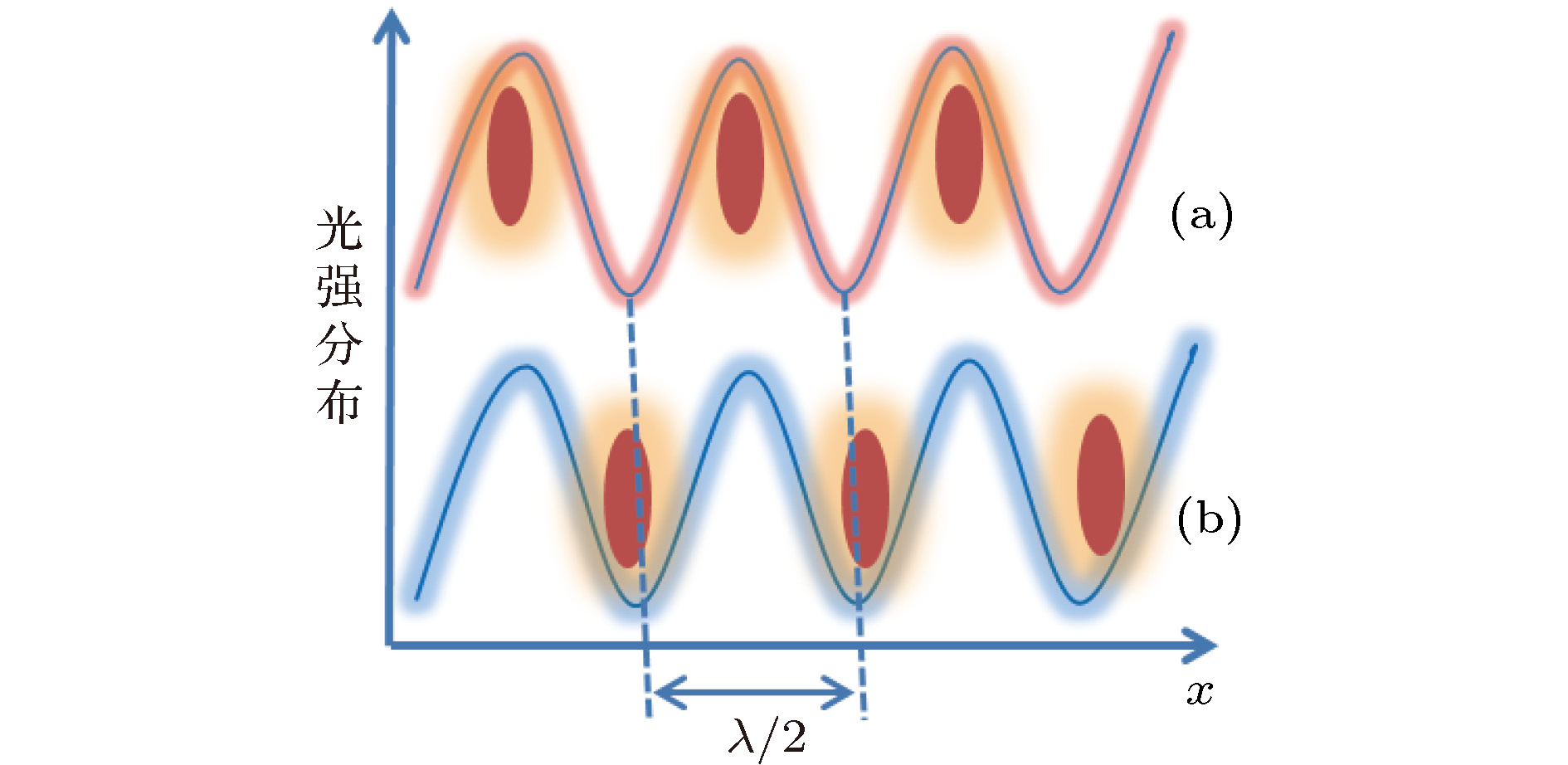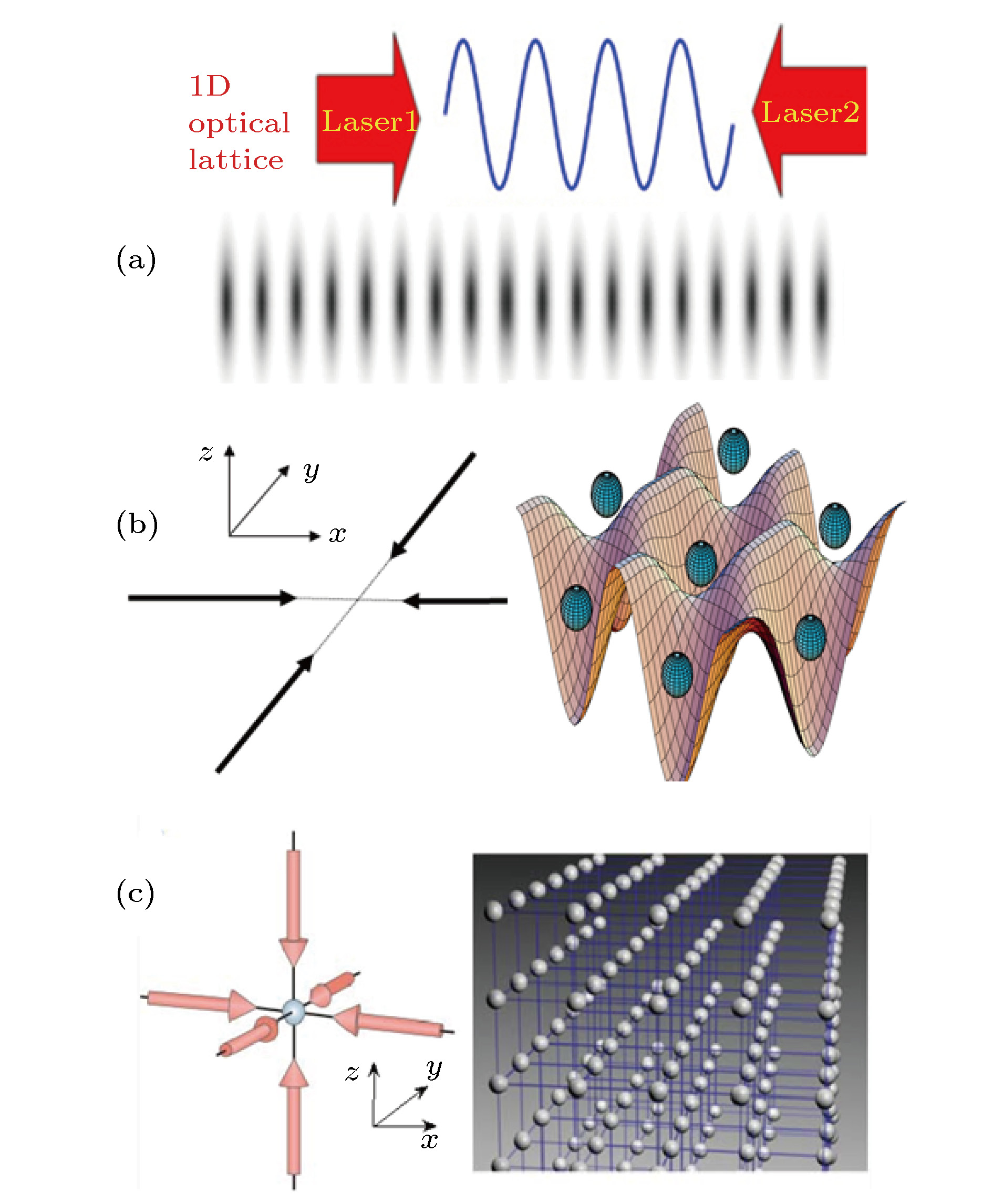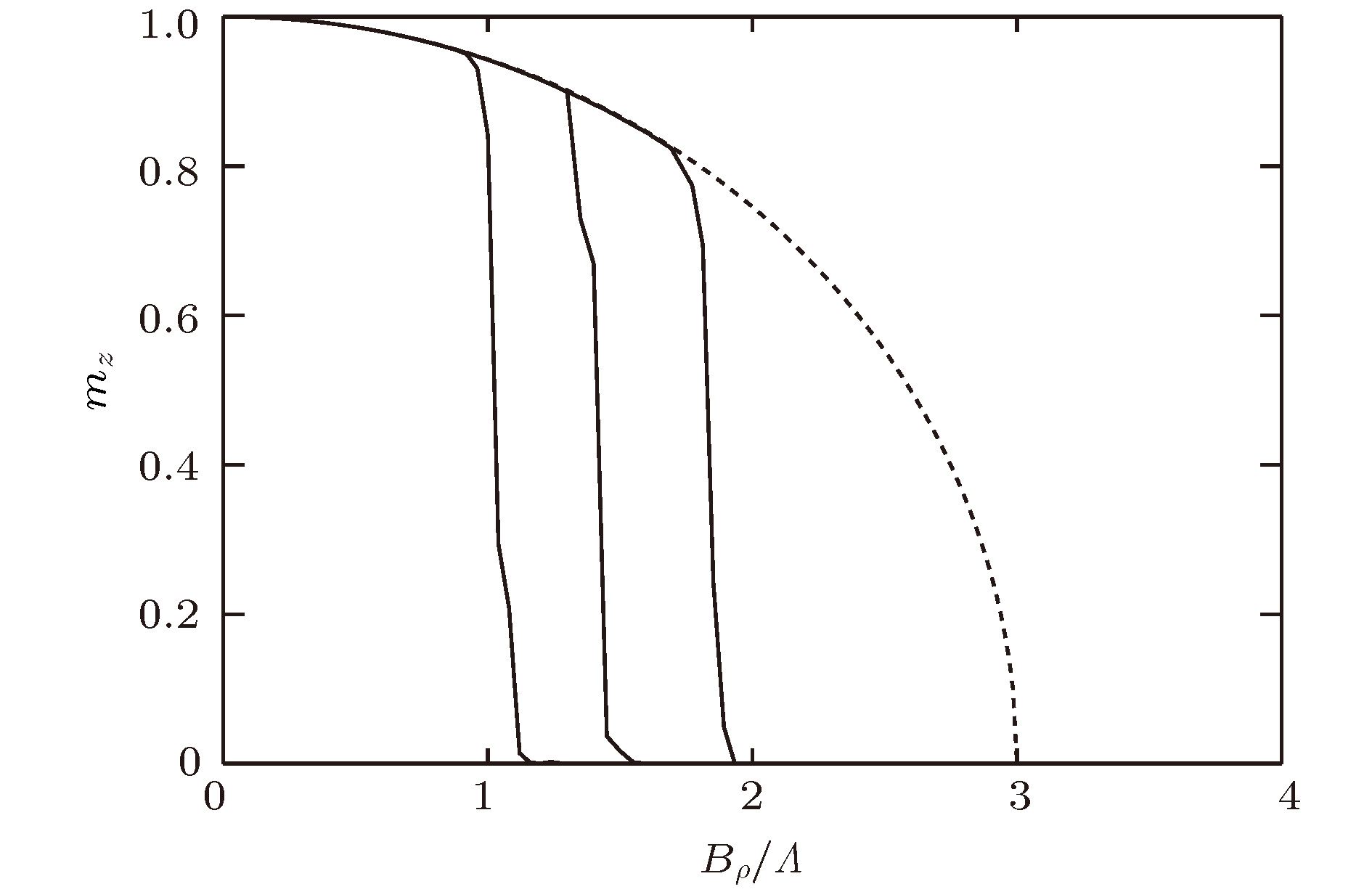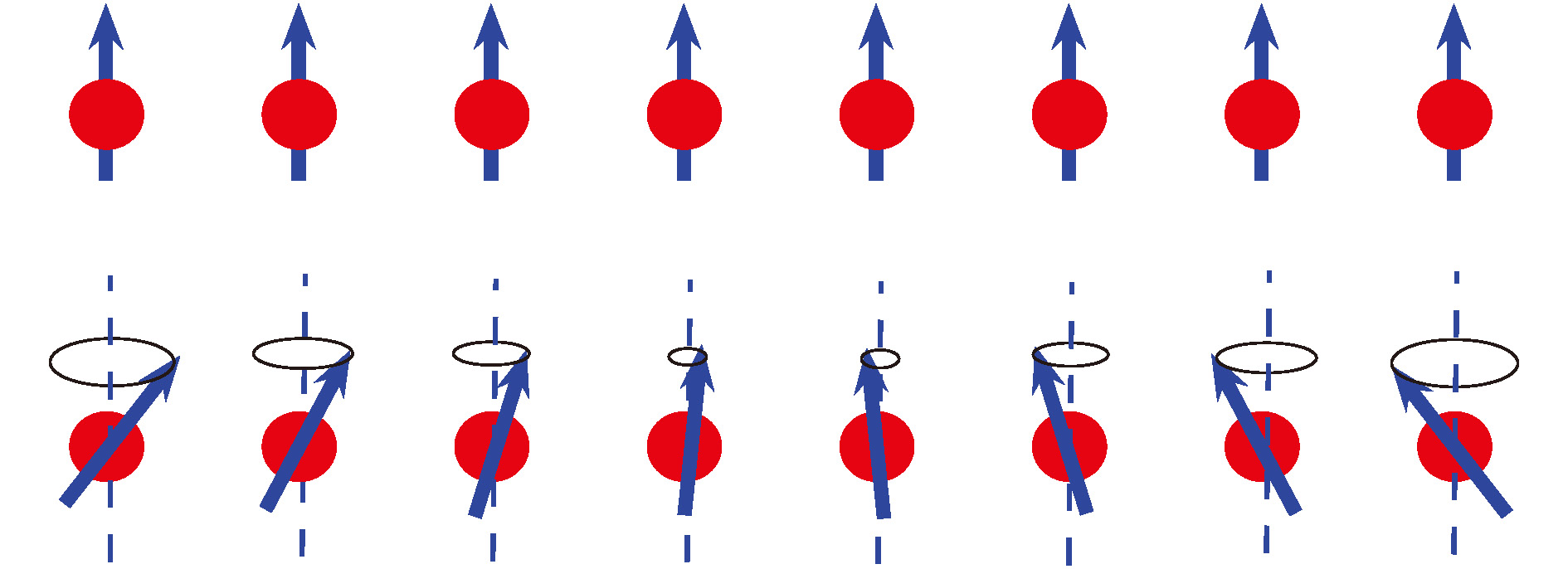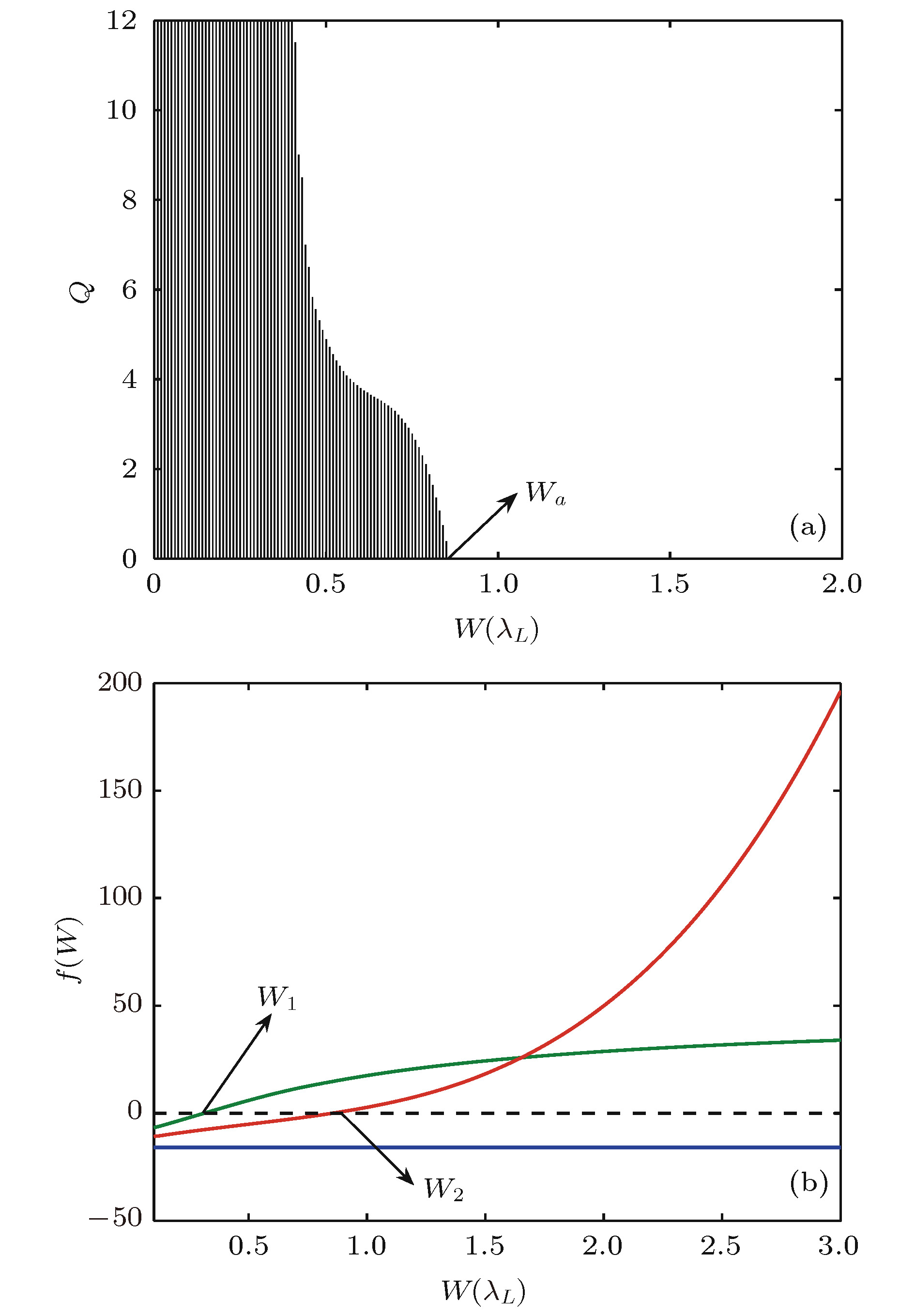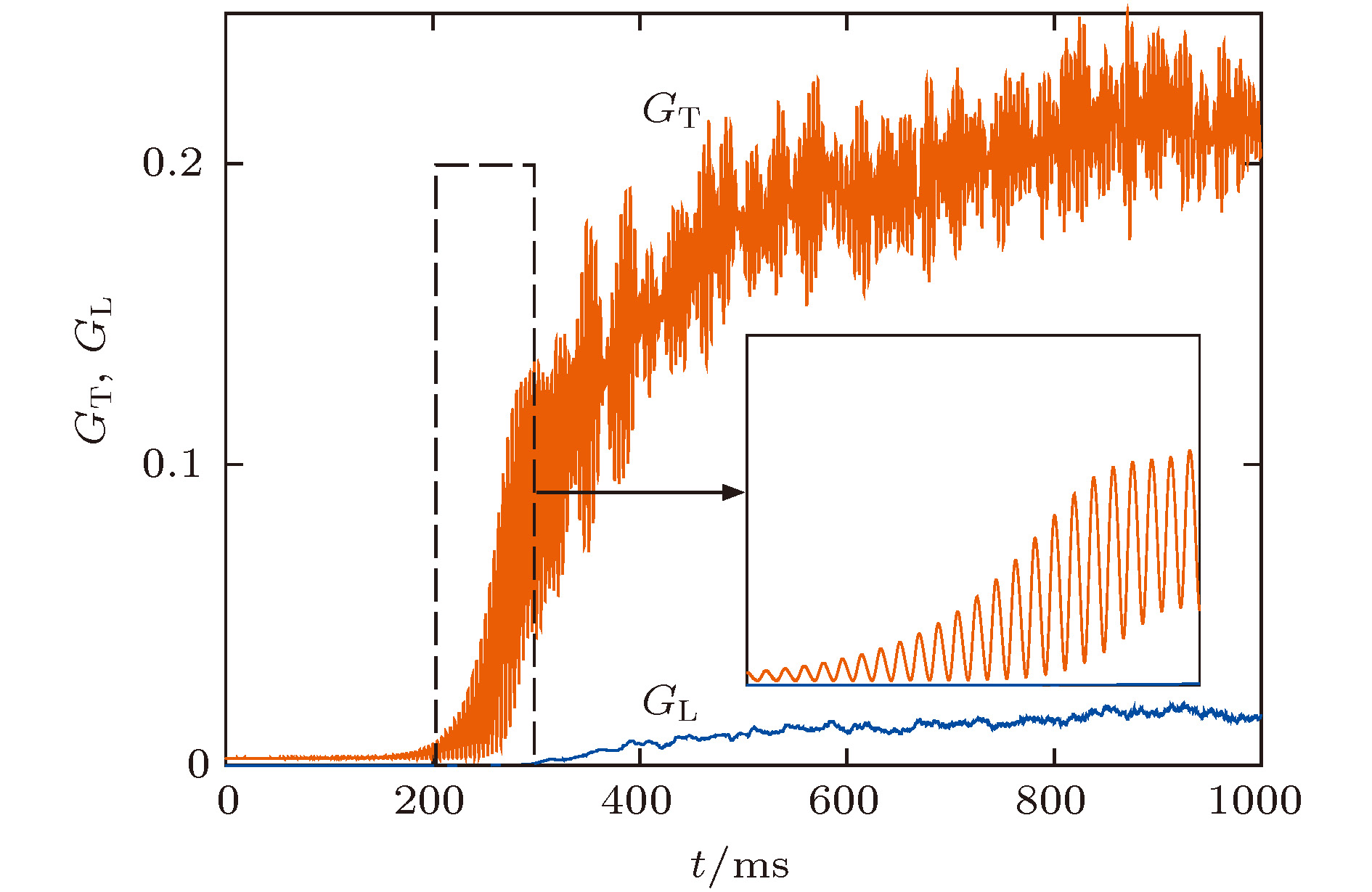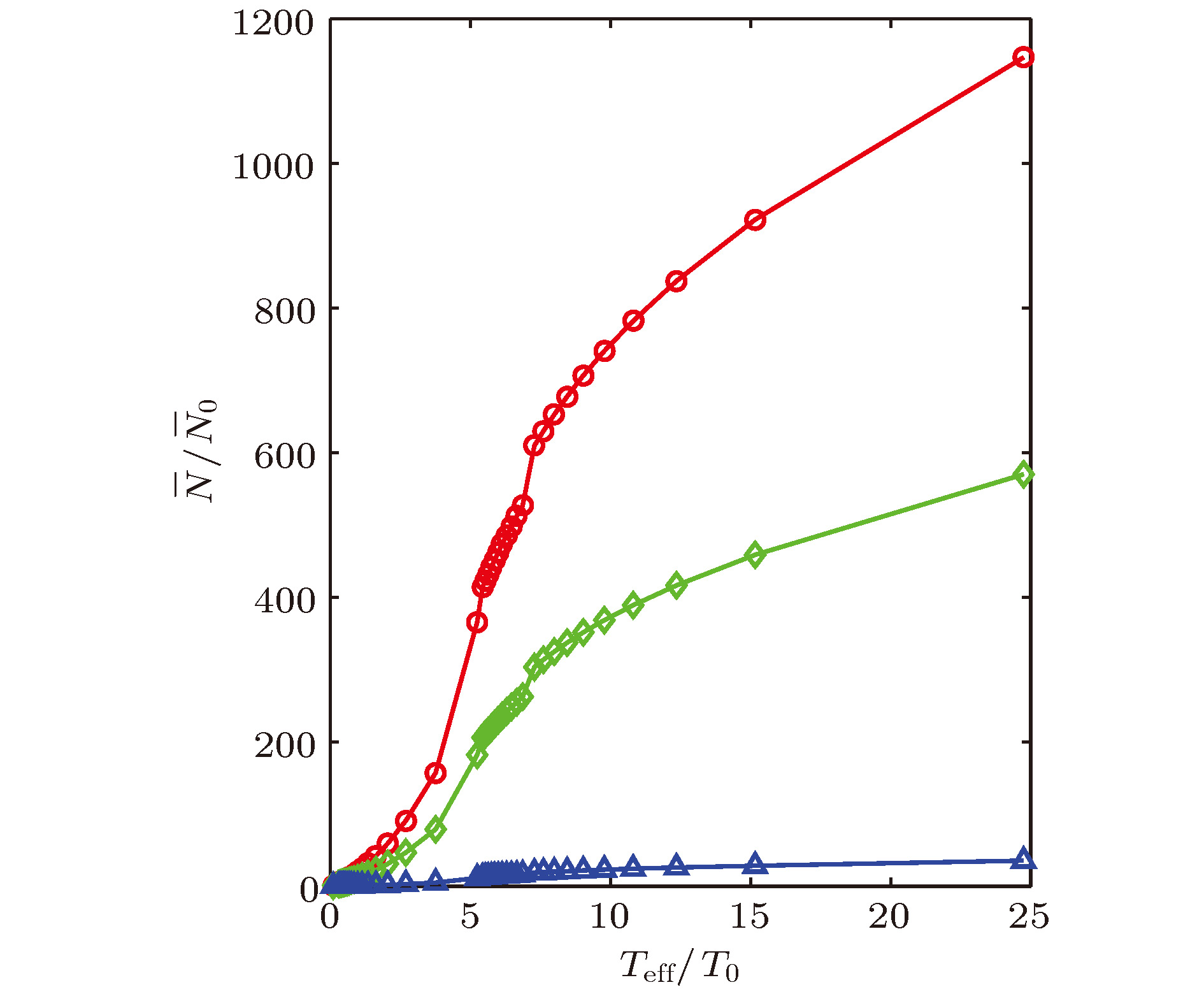-
Spinor condensates trapped in optical lattices have become potential candidates for multi-bit quantum computation due to their long coherence and controllability. But first, we need to understand the generation and regulation of spin and magnetism in the system. This paper reviews the origin and manipulation of the magnetism of atomic spin chains in optical lattices. The theoretical study of the whole process is described in this paper, including laser cooling, the spinor Bose-Einstein condensate preparations, the optical lattice, and the atomic spin chain. Then, the generation and manipulation of magnetic excitations are discussed, including the preparation of magnetic solitons. Finally, we discuss how to apply atomic spin chains to quantum simulation. The theoretical study of magnetic excitations in optical lattices will play a guiding role when the optical lattice is used in cold atomic physics, condensed matter physics and quantum information.
-
Keywords:
- spinor Bose-Einstein condensates /
- optical lattice /
- magnetic soliton /
- quantum simulation
[1] Xie Z W, Liu W M 2004 Phys. Rev. A 70 045602
 Google Scholar
Google Scholar
[2] 杨树荣, 蔡宏强, 漆伟, 薛具奎 2011 物理学报 60 060304
 Google Scholar
Google Scholar
Yang S R, Cai H Q, Qi W, Xue J K 2011 Acta Phys. Sin. 60 060304
 Google Scholar
Google Scholar
[3] Cristiani M, Morsch O, Müller J H, Ciampini D, Arimondo E 2002 Phys. Rev. A 65 063612
 Google Scholar
Google Scholar
[4] Kolovsky A R, Maksimov D N 2016 Phys. Rev. A 94 043630
 Google Scholar
Google Scholar
[5] 奚玉东, 王登龙, 佘彦超, 王凤姣, 丁建文 2010 物理学报 59 3720
 Google Scholar
Google Scholar
Xi Y D, Wang D L, Yu Y C, Wang F J, Ding J W 2010 Acta Phys. Sin. 59 3720
 Google Scholar
Google Scholar
[6] Li Z D, Li Q Y, He P B, Liang J Q, Liu W M, Fu G S 2010 Phys. Rev. A 81 015602
 Google Scholar
Google Scholar
[7] Stenger J, Inouye S, Stamper-Kurn D M, Miesner H J, Chikkatur A P, Ketterle W 1998 Nature 396 345
 Google Scholar
Google Scholar
[8] Li L, Li Z D, Malomed B A, Mihalache D, Liu W M 2005 Phys. Rev. A 72 033611
 Google Scholar
Google Scholar
[9] Ieda J, Miyakawa T, Wadati M 2004 Phys. Rev. Lett. 93 194102
 Google Scholar
Google Scholar
[10] Zhang W P, Pu H, Search C, Meystre P 2002 Phys. Rev. Lett. 88 060401
 Google Scholar
Google Scholar
[11] Pu H, Zhang W P, Meystre P 2001 Phys. Rev. Lett. 87 140405
 Google Scholar
Google Scholar
[12] Gross K, Search C P, Pu H, Zhang W P, Meystre P 2002 Phys. Rev. A 66 033603
 Google Scholar
Google Scholar
[13] Li Z D, He P B, Li L, Liang J Q, Liu W M 2005 Phys. Rev. A 71 053611
 Google Scholar
Google Scholar
[14] Xie Z W, Zhang W P, Chui S T, Liu W M 2004 Phys. Rev. A 69 053609
 Google Scholar
Google Scholar
[15] Hemmerich A, Hänsch T W 1993 Phys. Rev. Lett. 70 410
 Google Scholar
Google Scholar
[16] Grynberg G, Lounis B, Verkerk P, Courtois J Y, Salomon C 1993 Phys. Rev. Lett. 70 2249
 Google Scholar
Google Scholar
[17] Bloch I 2005 Nat. Phys. 1 23
[18] Fried D G, Killian T C, Willmann L, Landhuis D, Moss S C, Kleppner D, Greytak T J 1998 Phys. Rev. Lett. 81 3811
 Google Scholar
Google Scholar
[19] Zhao X D, Zhao X, Jing H, Zhou L, Zhang W P 2013 Phys. Rev. A 87 053627
 Google Scholar
Google Scholar
[20] Zhao X D, Geng Z D, Zhao X, Qian J, Zhou L, Li Y, Zhang W P 2014 Appl. Phys. B 115 451
 Google Scholar
Google Scholar
[21] Wilson C M, Johansson G, Pourkabirian A, Johansson J R, Duty T, Nori F, Delsing P 2011 Nature 479 376
 Google Scholar
Google Scholar
[22] Plunien G, Schützhold R, Soff G 2000 Phys. Rev. Lett. 84 1882
 Google Scholar
Google Scholar
[23] Yampolskii V A, Savelev S, Mayselis Z A, Apostolov S S, Nori F 2008 Phys. Rev. Lett. 101 096803
 Google Scholar
Google Scholar
[24] Saito H, Hyuga H 2008 Phys. Rev. A 78 033605
 Google Scholar
Google Scholar
-
图 4
$F = 1$ 旋量凝聚体的自旋畴示意图. 图(b)中,${m_f} = \pm 1$ 时凝聚原子会分成三个畴而且有明显的边界, 相互作用会诱导畴边界交叠如图(a)和图(c)所示, 在图(c)中自旋畴已经没有了明显边界[7]Figure 4. Spin-domain diagrams for condensates with
$F = 1$ . The cloud is separated into three domains with distinct boundaries in (b), components${m_f} = \pm 1$ are miscible as shown in (a), all three components are generally miscible in (c).图 5 原子自旋链中磁偶极-偶极相互作用诱导的自发磁化[11] 这里纵轴
${m_z}$ 代表$z$ 方向的自发磁化强度, 横轴${B_\rho }$ 是$x - y$ 平面上的外磁场强度, 虚线是平均场近似的结果, 数值模拟所得实线对应的是不同的格点填充数$N = 10,15,20$ Figure 5. Spontaneous magnetization of atomic spin chain dominated by magnetic dipole-dipole interaction.
${m_z}$ is the magnetization components in the$z$ -axis direction,${B_\rho }$ is intensity of the external magnetic field. The dashed line represents the mean-field result and the solid lines, from left to right, correspond to the exact numerical results for a two-site lattice with$N = 10,15\;{\rm{ and }}\;20$ atoms.图 6 原子自旋链中自旋波的激发. 图的上部分是原子自旋链的铁磁基态示意图, 下部分是偶极-偶极相互作用下自旋进动在晶格方向的传播[18]
Figure 6. Spin waves are excited in atomic spin chain in optical lattice. Top: ferromagnetic ground-state structure of the spinor BEC atomic spin chain. Bottom: spin in each lattice site processes in spin space and spin waves can be excited.
图 7 通过控制外场实现磁孤子的产生 (a)红失谐光晶格中控制驱动光场和束缚场产生磁孤子,
$Q$ 是驱动光场的强度,$W$ 是晶格的横向囚禁宽度, 空白的区域对应有磁孤子产生, 反之, 暗的区域不能激发磁孤子; (b)蓝失谐光晶格中调节束缚场来产生磁孤子, 蓝线、绿线和红线分别代表考虑近邻、次近邻和长程的结果,$f(W) > 0$ 代表有磁孤子激发[19]Figure 7. Magnetic soliton are excited by tuning external field: (a) Magnetic soliton are produced by tuning driving light field and trapping potential in red-detuning case, the vertical axis
$Q$ stands for the intensity of the modulated laser, and thehorizontal axis$W$ represents the transverse width of the condensate, the blank region corresponds to the existence of solitons; (b) magnetic soliton are produced by tuning trapping potential in blue-detuning case, the three lines correspond to the nearest-neighbor approximation (blue), the next-nearest-neighbor approximation (green),and the continuum limit approximation (red), respectively, magnetic solitons occur in the region$f(W) > 0$ .图 8 通过调节束缚场实现磁振子压缩态 实红线、绿虚线和黑实线分别对应于横向囚禁宽度为
$w = 1.5{\lambda _{\rm{L}}},$ $1.98{\lambda _{\rm{L}}},3.0{\lambda _{\rm{L}}}$ 的情况,${F_k} < 0$ 代表产生了压缩[19]Figure 8. Spin waves are excited in atomic spin chain in optical lattice. We choose three transverse trapping widths of the condensate:
$w = 1.5{\lambda _{\rm{L}}}$ (solid red line),$1.98{\lambda _{\rm{L}}}$ (dashed blue line), and$3.0{\lambda _{\rm{L}}}$ (dotted black line), respectively, the magnon squeezing states occur when${F_k} < 0$ .图 9 外磁场驱动下囚禁势中旋量凝聚体的横向和纵向的磁化随时间的演化 红线是横向的磁化
${G_{\rm{T}}}$ , 蓝线代表纵向的磁化${G_{\rm{L}}}$ , 图中插图显示的是横向磁化被放大的过程[23]Figure 9. Time evolution of the average squared transverse magnetization
${G_{\rm{T}}}$ (red curve) and longitudinal magnetization${G_{\rm{L}}}$ (blue curve), the exponential growth of${G_{\rm{T}}}$ is shown in subgraph.图 10 不同强度的驱动场下自旋起伏的放大倍数随有效温度的变化 图中红色圈、绿色方块和蓝色三角分别代表我们选择的不同的驱动光场强度, 通过适当选择光场强度可以使磁振子激发产生指数形式的增长, 也就是动力学卡西米尔效应[18]
Figure 10. Amplification factor as a function of the effective temperature under different intensities of the external modulation laser, the the dynamical Casimir effect at finite temperature take place if the proper parameters are selected.
-
[1] Xie Z W, Liu W M 2004 Phys. Rev. A 70 045602
 Google Scholar
Google Scholar
[2] 杨树荣, 蔡宏强, 漆伟, 薛具奎 2011 物理学报 60 060304
 Google Scholar
Google Scholar
Yang S R, Cai H Q, Qi W, Xue J K 2011 Acta Phys. Sin. 60 060304
 Google Scholar
Google Scholar
[3] Cristiani M, Morsch O, Müller J H, Ciampini D, Arimondo E 2002 Phys. Rev. A 65 063612
 Google Scholar
Google Scholar
[4] Kolovsky A R, Maksimov D N 2016 Phys. Rev. A 94 043630
 Google Scholar
Google Scholar
[5] 奚玉东, 王登龙, 佘彦超, 王凤姣, 丁建文 2010 物理学报 59 3720
 Google Scholar
Google Scholar
Xi Y D, Wang D L, Yu Y C, Wang F J, Ding J W 2010 Acta Phys. Sin. 59 3720
 Google Scholar
Google Scholar
[6] Li Z D, Li Q Y, He P B, Liang J Q, Liu W M, Fu G S 2010 Phys. Rev. A 81 015602
 Google Scholar
Google Scholar
[7] Stenger J, Inouye S, Stamper-Kurn D M, Miesner H J, Chikkatur A P, Ketterle W 1998 Nature 396 345
 Google Scholar
Google Scholar
[8] Li L, Li Z D, Malomed B A, Mihalache D, Liu W M 2005 Phys. Rev. A 72 033611
 Google Scholar
Google Scholar
[9] Ieda J, Miyakawa T, Wadati M 2004 Phys. Rev. Lett. 93 194102
 Google Scholar
Google Scholar
[10] Zhang W P, Pu H, Search C, Meystre P 2002 Phys. Rev. Lett. 88 060401
 Google Scholar
Google Scholar
[11] Pu H, Zhang W P, Meystre P 2001 Phys. Rev. Lett. 87 140405
 Google Scholar
Google Scholar
[12] Gross K, Search C P, Pu H, Zhang W P, Meystre P 2002 Phys. Rev. A 66 033603
 Google Scholar
Google Scholar
[13] Li Z D, He P B, Li L, Liang J Q, Liu W M 2005 Phys. Rev. A 71 053611
 Google Scholar
Google Scholar
[14] Xie Z W, Zhang W P, Chui S T, Liu W M 2004 Phys. Rev. A 69 053609
 Google Scholar
Google Scholar
[15] Hemmerich A, Hänsch T W 1993 Phys. Rev. Lett. 70 410
 Google Scholar
Google Scholar
[16] Grynberg G, Lounis B, Verkerk P, Courtois J Y, Salomon C 1993 Phys. Rev. Lett. 70 2249
 Google Scholar
Google Scholar
[17] Bloch I 2005 Nat. Phys. 1 23
[18] Fried D G, Killian T C, Willmann L, Landhuis D, Moss S C, Kleppner D, Greytak T J 1998 Phys. Rev. Lett. 81 3811
 Google Scholar
Google Scholar
[19] Zhao X D, Zhao X, Jing H, Zhou L, Zhang W P 2013 Phys. Rev. A 87 053627
 Google Scholar
Google Scholar
[20] Zhao X D, Geng Z D, Zhao X, Qian J, Zhou L, Li Y, Zhang W P 2014 Appl. Phys. B 115 451
 Google Scholar
Google Scholar
[21] Wilson C M, Johansson G, Pourkabirian A, Johansson J R, Duty T, Nori F, Delsing P 2011 Nature 479 376
 Google Scholar
Google Scholar
[22] Plunien G, Schützhold R, Soff G 2000 Phys. Rev. Lett. 84 1882
 Google Scholar
Google Scholar
[23] Yampolskii V A, Savelev S, Mayselis Z A, Apostolov S S, Nori F 2008 Phys. Rev. Lett. 101 096803
 Google Scholar
Google Scholar
[24] Saito H, Hyuga H 2008 Phys. Rev. A 78 033605
 Google Scholar
Google Scholar
Catalog
Metrics
- Abstract views: 16155
- PDF Downloads: 254
- Cited By: 0














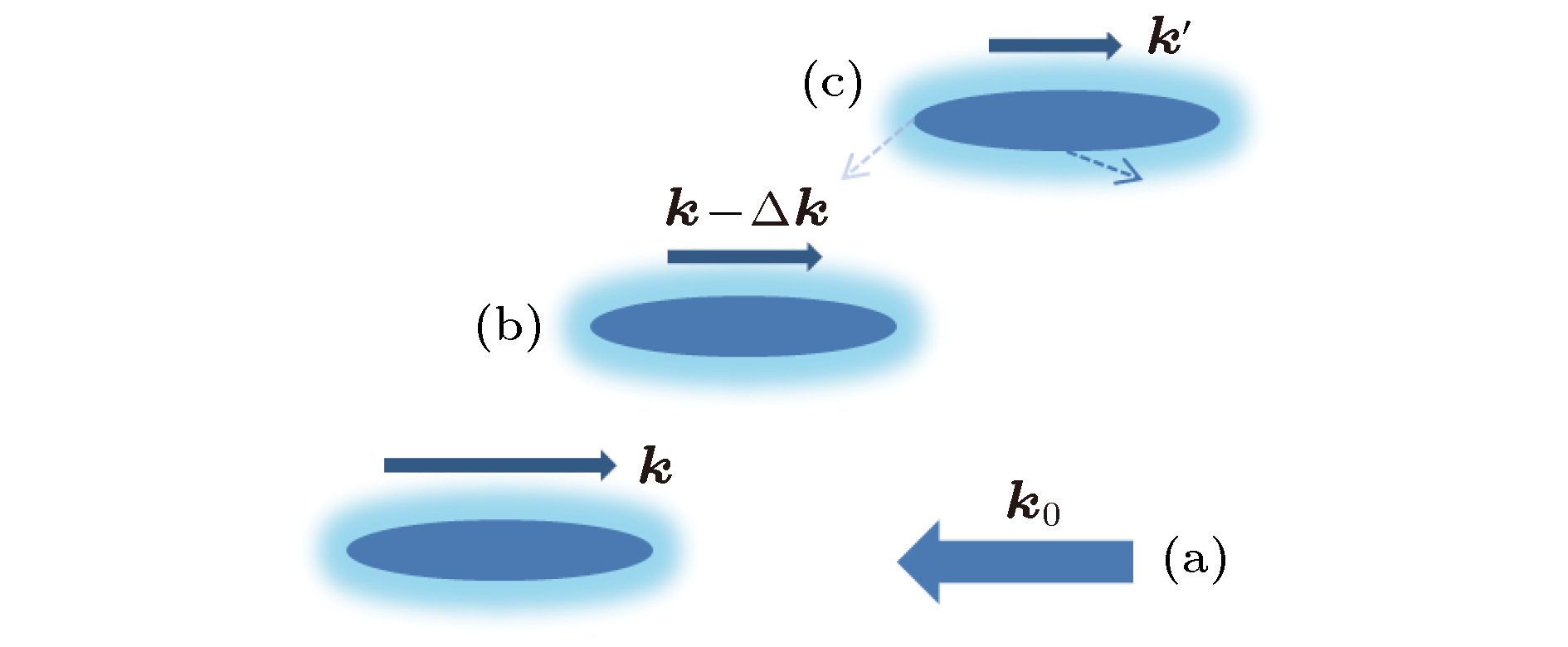
 DownLoad:
DownLoad:
